Harbin(哈尔滨) is a city in Northeast China with a heavy Russian influence. Around 1913 the first generation of Russian immigrants came mostly to work for the Chinese Eastern Railway, since then they left noticable marks on local culture, one of which is : 大列巴(pronounced: Da Le Ba). This is a miche like sourdough bread that' was first introduced to the locals by a Russian baker, and has been sold in Harbin bakeries for over a hundred years. Even its Chinese name was originated from Russian word khleb (bread). The fact that this bread was accepted and welcomed by Chinese people, even became a famous "traditional Harbin food" is very interesting since its sour and chewy taste is decidely different from other traditional Chinese foods. In recent years many bakeries have been opened all over China, but they mostly sell soft and fluffy Asian style breads, very few sourdough breads, nothing at all like 大列巴.
I have been wanting to recreat this flavorful bread for years, but only one local company has the recipe, they have been making it the same way since the beginning, obviously they are not spilling the secret. With the power of internet, I did manage to find some clues:
Firstly, this is how they look (the following two pictures are from a Chinese news article on the web):
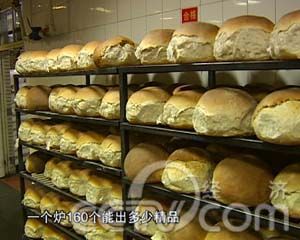
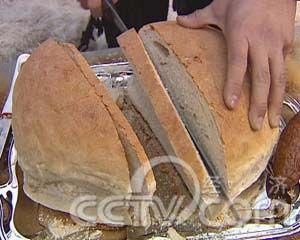
- According to the articles: the bread is made from "beer hops liquid natural starter", not commercial yeast, which brings sourness and "beer taste" to the bread. I am assuming the "hops liquid natural starter" is a "barm", either traditional ale beer barm or simply liquid natural starter with hops added in. For my version, I simply used the barm starter I created last time with Dan Lepard's method (see details here).
- Various articles mention that the bread went through a 3 stage fermentation process. To mimic that, I used the miche forumla in "Advanced Bread and Pastry" which also use a 3 stage fermentation. Hoewever, my fermentation timeline is a little different from what they do for 大列巴. Their total fermentation is 16 hours, while mine is 24 hours + an overnight cold proofing in the fridge. It fits my schedule better, and makes the bread more flavorful IMO.
- The ingredient list for 大列巴 reads: flour, salt, water, beer hops, so I am pretty sure it's a lean dough with no sugar or fat, but I am unsure what kind of flour they use. Traditional Russian breads would have a high percentage of rye, but judging from the pictures, and people's comments on flavor, I think there is very little rye flour, if any at all. This is reasonable since rye flour is not easily or cheaply available in China, plus local people would much prefer the taste and color of white flour. I used a little bit of rye in the final dough, and KA Bread Flour for the rest.
- It's baked in a traditional brick oven (which is again very rare in China) with high heat, and the breads come out of the oven with a hard and crackly crust. That one is easy - I simply baked it on my baking stone like a miche.
- Each 大列巴 weights 2KG, about 8 to 10 inches round. I scaled it to about 1KG, 6 inches round. From the pictures above you can see there's a softer/lighter colored portion around the sides of the bread, I think it's because they bake a lot of them in each batch, so breads grow into each other, the areas that touch don't get a hard crust (sort of like a pan of pull apart buns). Even though I like a good crust, to make it look more authentic, I baked the bread in a bottomless mousse ring, to get the light colored softer sides.
Here it is!
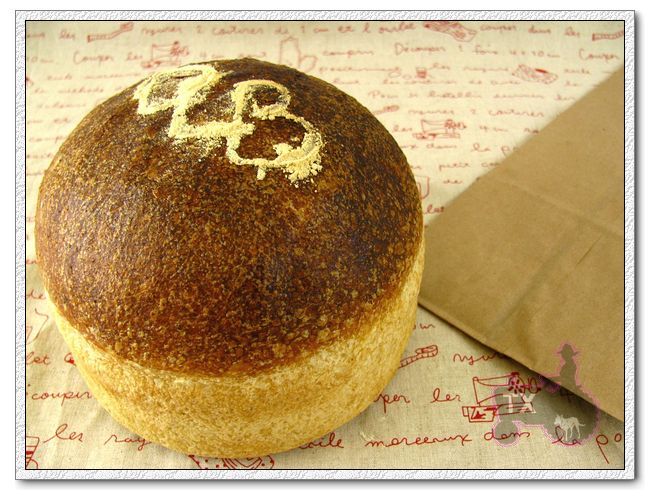
When I used the barm starter, it had been in the fridge for 3 days, but it raised the two starter doughs and the final dough like a bat out of cage. When I loaded the final dough into the mousse ring, it's about 60% full, after 10 hours in the fridge, it has went over the rim of the ring. I was afraid I had over-proofed the dough, but it kept rising in the oven, crazy oven sping, that barm starter is STRONG!
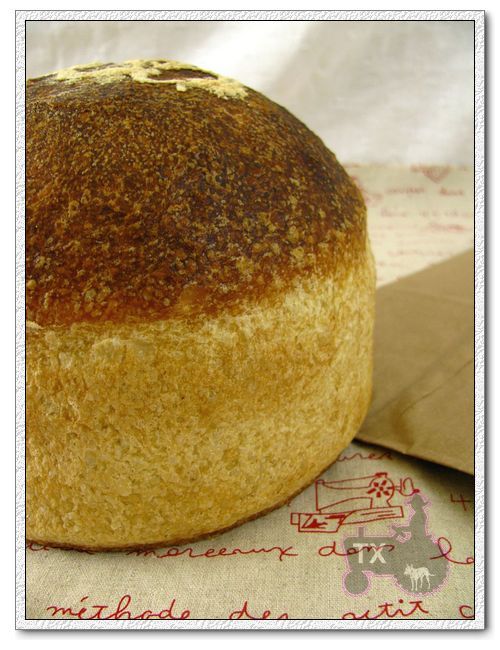
Crispy and crackling crust on top, and soft sides, just like the real thing. Since I do like crust, next time I will skip the mousse ring and just bake it free form.
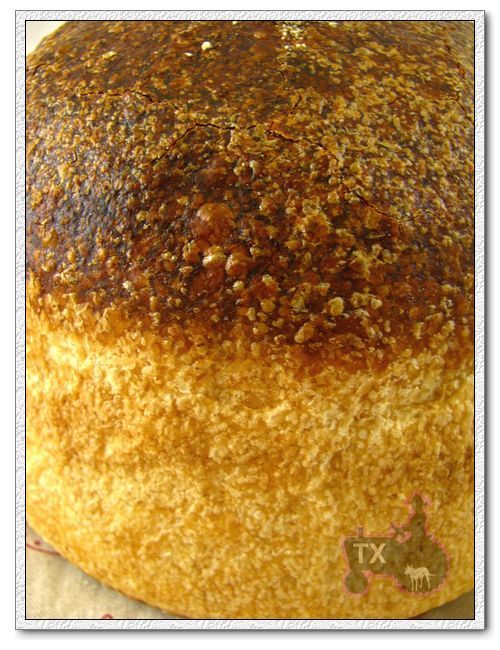
Nice and chewy crumb. Just like the real thing, there's no big holes but thats expected with the lower hydration, and how the dough handled in the process.

It's noticably sour, very flavorful, crumb is chewy and moist, one of the best miche breads I've made!
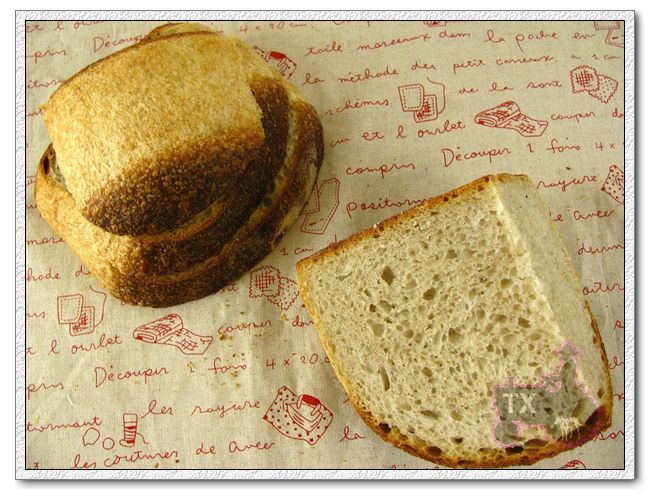
I've only had the authentic 大列巴 once, many years ago, but I think my version is pretty close in flavor. Next time I will use high extraction flour intead of white flour, and increase the ratio of rye, that will match my current taste preference better.
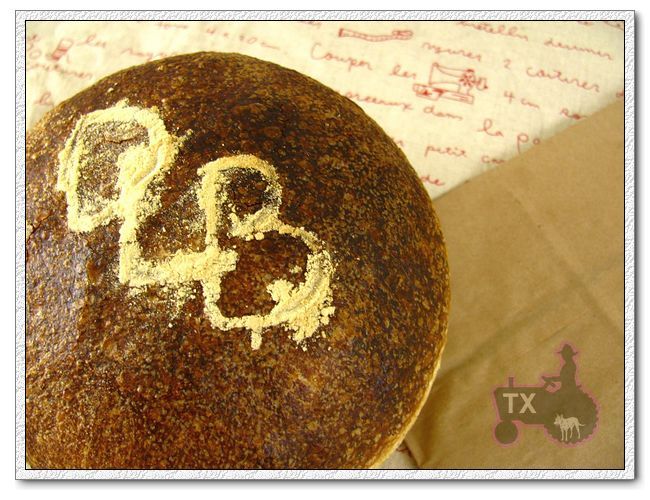
大列巴 (fermentation procedure adapted from "AB&P")
-first dough
barm starter, 14g(see details here)
bread flour, 39g
water, 39g
salt ,1/8tsp
1. mix and cover, fermentate for 16 hours.
-second dough
first dough
bread flour, 234g
water, 280g
salt, 1/4tsp
2. mix and cover, fermentate for 8 hours. Mine became so very light and bubbly.

-final dough
2nd dough
bread flour, 212g
rye, 54g
water, 25g
salt, 10.5
3. mix and knead until medium gluten developement.
4. bulk rise only for 15 min, lightly preshape into boule, rest for 20 to 30min
5. shape and drop into mousse ring, cover and put in fridge immediately for overnight
6. next morning bake directly from fridge, 440F with steam, 50min.
*This bread is going to YeastSpotting